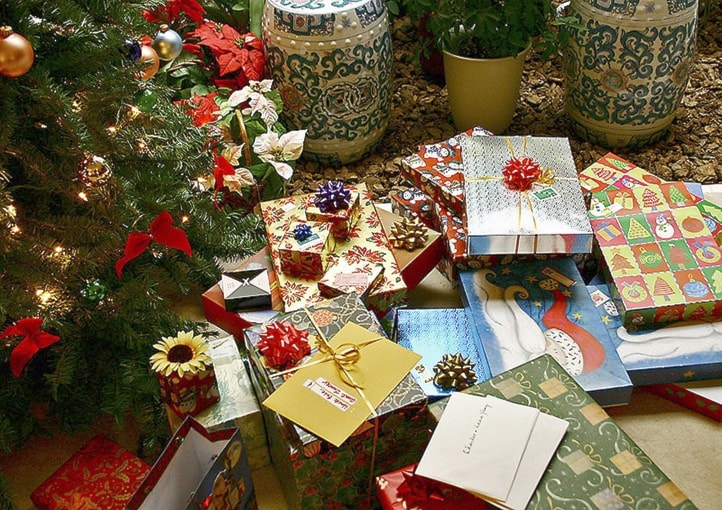“Brown paper packages tied up with string” are one of the “favourite things” Maria sings about in The Sound of Music. Cassandra Enns—environmental health services officer for the Thompson-Nicola Regional District (TNRD)—encourages more people to go the brown paper and string route this year, when wrapping Christmas gifts.
She says that 25 to 35 per cent more waste is generated during the holiday season, and that much of that is made up of wrapping paper, plastic ribbon, and plastic bows that end up in the landfill. “Use plain brown paper and cloth ribbons,” she suggests as an alternative to commercial wrapping paper, “or buy different bolts of fabric and cut them down to the right size.”
For those who like the look of wrapping paper under the tree, she says re-using wrapping paper from year to year, while extreme, creates “heirloom” paper that is enjoyed again and again, and reduces our waste footprint. Another option is to wrap a gift in a small throw blanket. “That way people get a beautiful throw, with a gift inside it.”
Metallic wrapping paper, while attractive, is not recyclable. Ordinary, non-metallic wrapping paper can be recycled, and Enns encourages people to do that come Christmas morning.
Plastic bows are another item that can be reused year after year, rather than thrown away after just one use. It is an approach that will also save money, as consumers will not have to purchase bows every holiday season.
“There are so many things you can do to reduce waste,” says Enns. She cites food and paper waste from holiday entertaining as other contributors to the increase in waste. Rather than buy paper plates and plastic glasses and cutlery for parties and dinners, “Stick to your normal plates. Doing dishes together is great family time, so wash them up together and create memories.” Plastic glasses and cutlery, she points out, are not recyclable, so end up in the landfill.
Food waste is another issue, with leftover food often being thrown away. “Send leftover food home with guests in Ziploc bags, or ask guests to bring a plastic container so they can take food home,” says Enns. “You’ll be a popular host or hostess.”
When it comes to gifts, Enns cites over-packaging as a major source of waste. While there is little consumers can do about this, she asks that people try to separate recyclables such as cardboard and paper and recycle them if you can. And try to bring a reusable bag when out shopping. “Imagine how much you could reduce your footprint by bringing your own bag, even if it’s just for the holidays.”
A good way to cut down on over-packaged gifts is to give experiences instead, says Enns. “What’s the last material item you really remember being given from year to year, versus how many experiences with loved ones? Encourage people to give experiences instead; something you can enjoy together, like tickets to events.
“You can give someone a special experience for them to enjoy, like horseback lessons. Or make up gift certificates and give the gift of something they don’t like to do, such as washing or detailing their car.
“That’s what the holidays are really about. What better gift can you give, than a waste-free future?”
